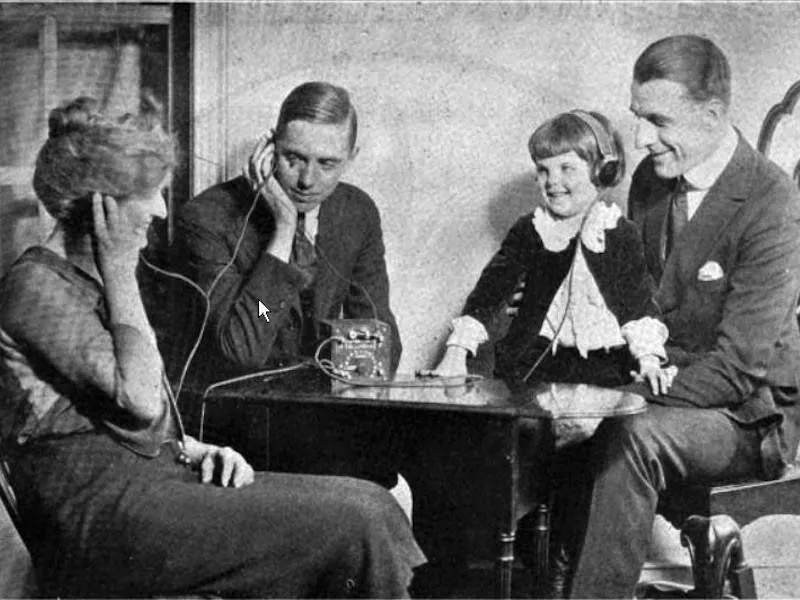For 13 long years, Americans couldn’t get a drink. Not legally. The 18th Amendment banned the manufacture, sale and transportation of liquor, and as of Jan. 17, 1920, Prohibition began.
Until the 21st Amendment was enacted on Dec. 5, 1933, legalizing alcohol again, Americans had to find other ways to enjoy a cold one (or three), which led to bootlegging and other crimes.
These 13 years shaped the country in more ways than one. From the Roaring Twenties to the Great Depression, Americans were undergoing serious changes. Take a look at how this period in time shaped some of America’s largest cities then and now.
Nashville Then

A family listening to the first broadcasts around 1920 with a crystal radio. The crystal radio, a legacy from the pre-broadcast era, could not power a loudspeaker so the family must share earphones. Wikipedia
Before streaming television kept us entertained in our homes, there was radio. Families would gather around a radio to listen to their favorite programs. On Nov. 28, 1925, at 8 p.m., George D. Hay debuted his one-hour barn dance featuring country music. In 1927, he renamed his live music show the Grand Ole Opry.
In 1943, the radio show moved to the Ryman Auditorium, where it debuted country acts for 31 years before relocating to its current home — making the Grand Ole Opry the longest-running radio show of all-time.